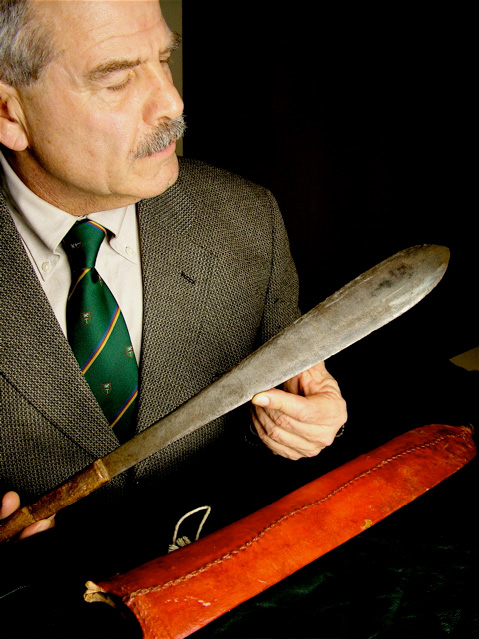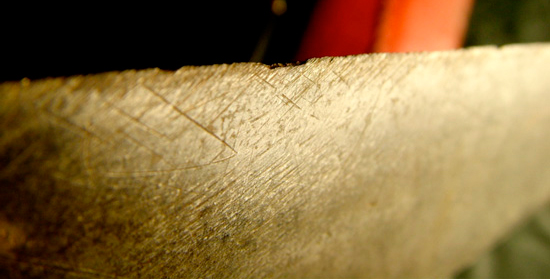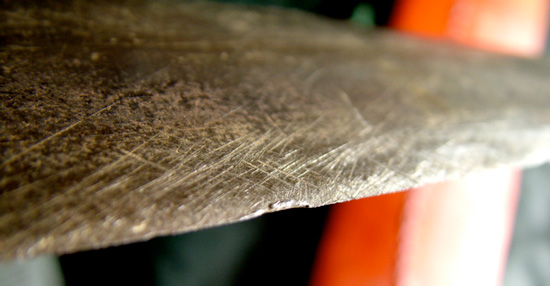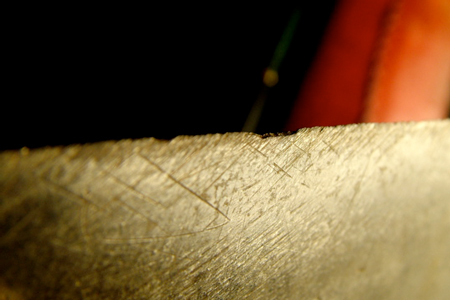This is a story about the Mau Mau panga (Simi).
Written by COLUMBUS SMITH
The Mau Mau used it as writing instrument to record their history. Just read the blade. I wrote it in Jan 2008
While the rest of the world records history with fonts and film, in Africa the nicks and gouges along bloodstained pangas tell you exactly where steel met bone.
THIS Kenyan “simi” is a double edged killer of 25 inches and actually chopped up a pre-teen white male, after he was tortured by the Kikuyus during the Mau Mau Revolt 1953-57.) He was the cousin of Di Cameron who gave me this “simi” in 1978 in Salisbury, Rhodesia. It held terrible memories for her. After the murderers were tracked down and killed the army commander gave this “memento” to her family. She was happy to get rid of it.
The Mau Mau Revolt was finally suppressed but convinced Britain to order all its African colonies to hand over the reins to the natives. “Winds of Change?” More like “Blades of Change.” The Kikuyus took over in 1963. Whites-including Di’s family-fled and some went to Rhodesia. Blades won.

THIS blade may have killed many more in that uprising that took about 1800 lives (‘only’ 32 of them whites on remote farms. ) But a repeat of sorts is unfolding as we speak, with a death toll of over a thousand in Kenya since President Kibaki, a Kikuyu, nullified a very close election in December when it looked like his opponent was winning. A quarter million of the 26 million Kenyans have been displaced by the tribal violence. While the Kikuyus make up but 22% of the population they dominate politics and commerce.

I wish a forensic pathologist could take a close look at this blade that seems to have been made from an auto leaf spring. There must be experts who can take a look and determine what caused a nick here or slight rolled edge there. Experts out of Rwanda, Congo, and Sierra Leone……. who can read African history without a book.
Jos. Columbus Smith
Portland
Ps. Di Cameron is the designer of Rhodesian Army camouflage. She was a fabric print designer with David Whitehead Textiles in Salisbury.
“Every week I would paint patterns on canvass and drive them over to army headquarters where the generals would look at them. Finally, one week, they said they liked one of my patterns and that became the camouflage.”
I wore that camouflage for 37 months in the The Rhodesian Army. We had only ONE camouflage. Although we had a dry and wet season we simply used our old and faded uniforms for the dry season.

